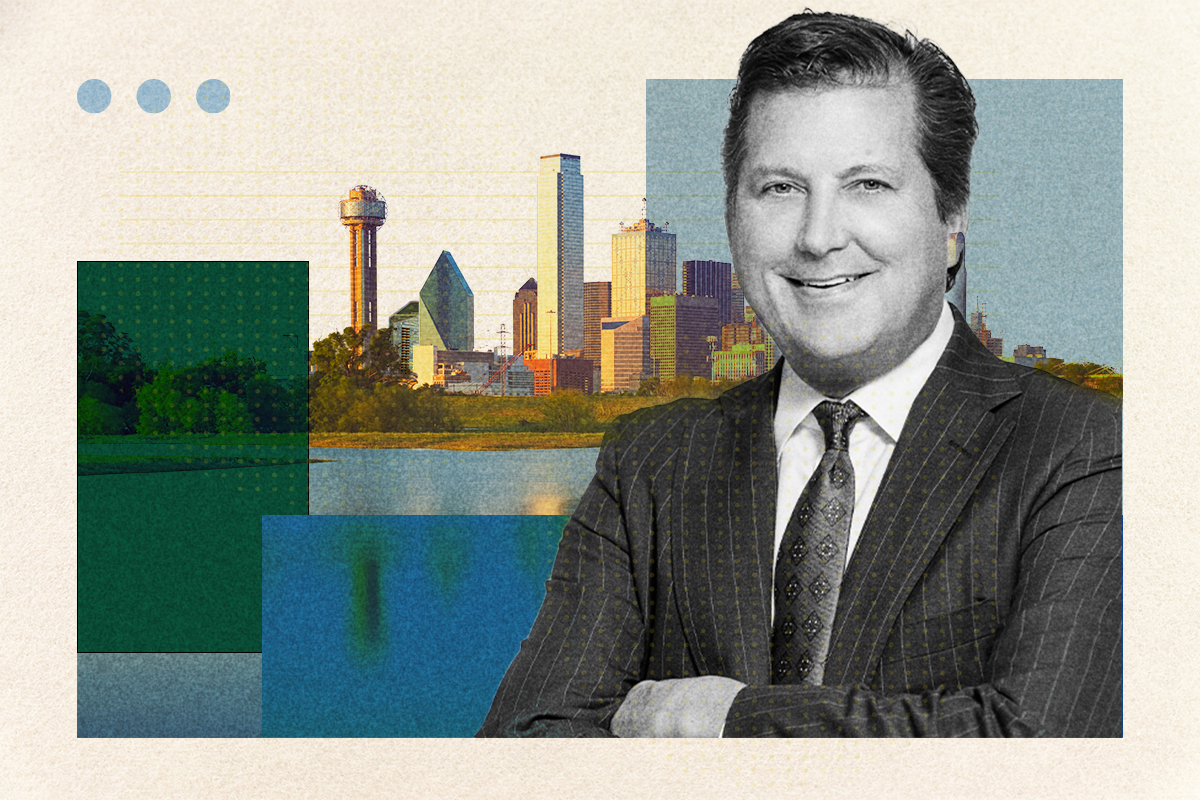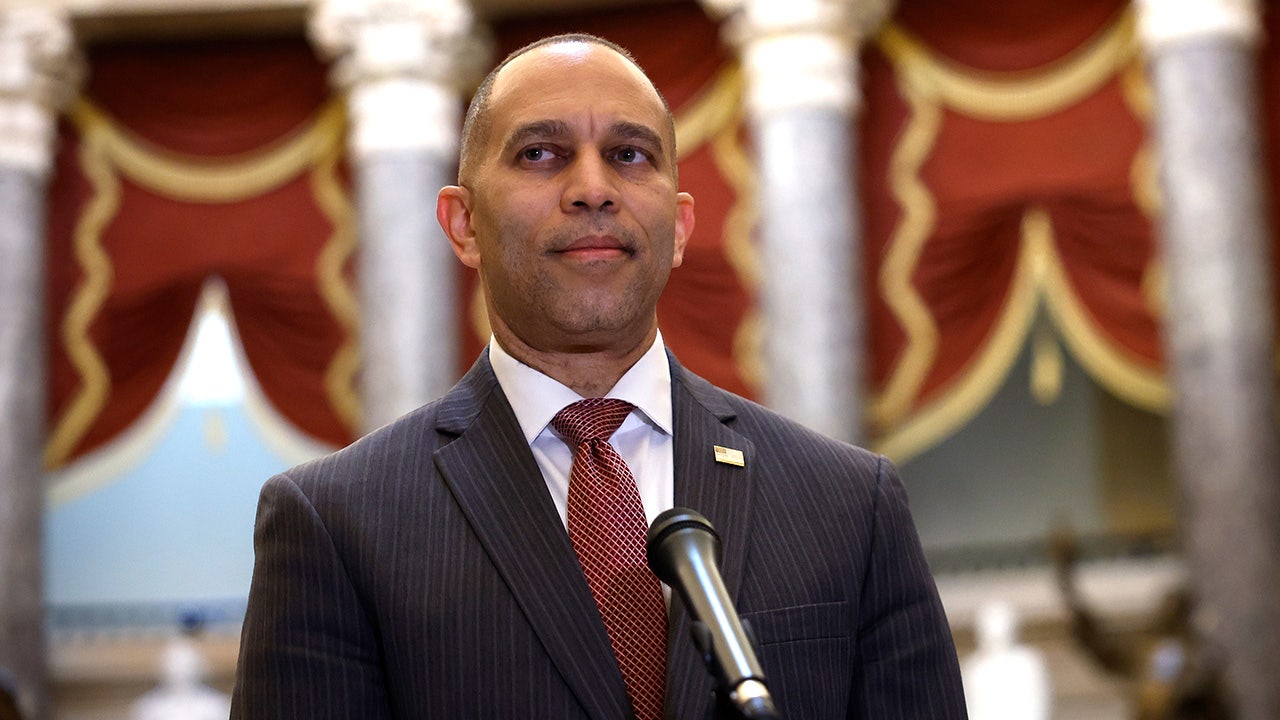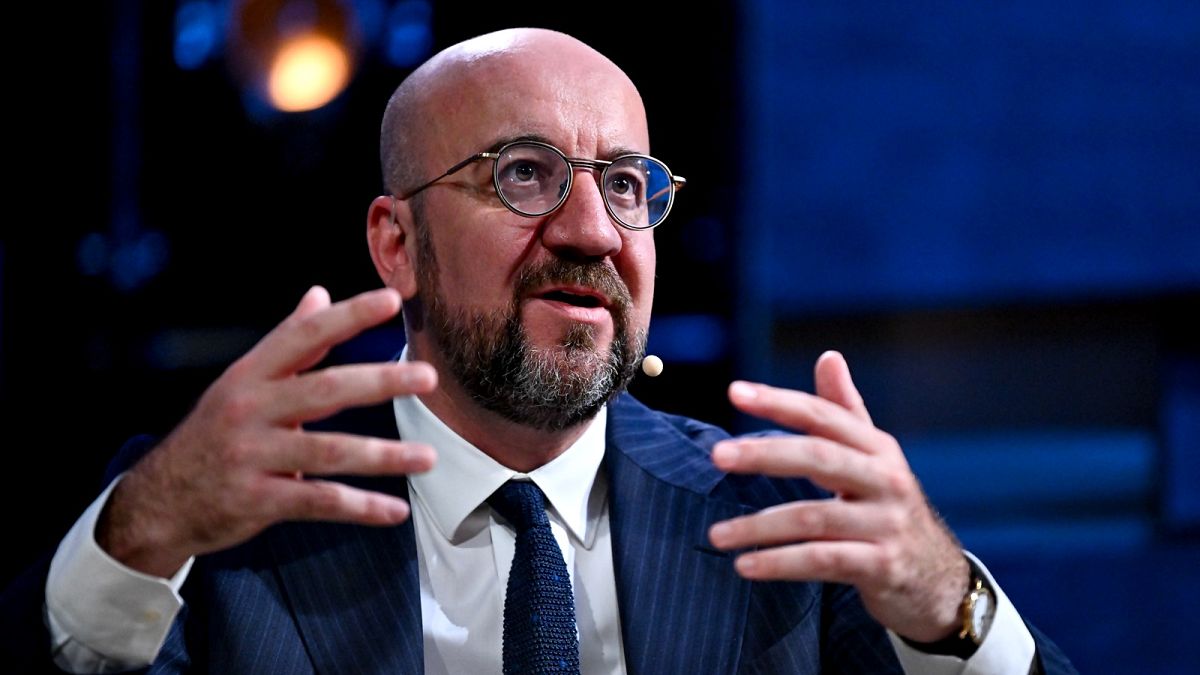Southwest
Jewish students at the University of Texas say escalating antisemitism is spiraling into pure 'Jew hatred'
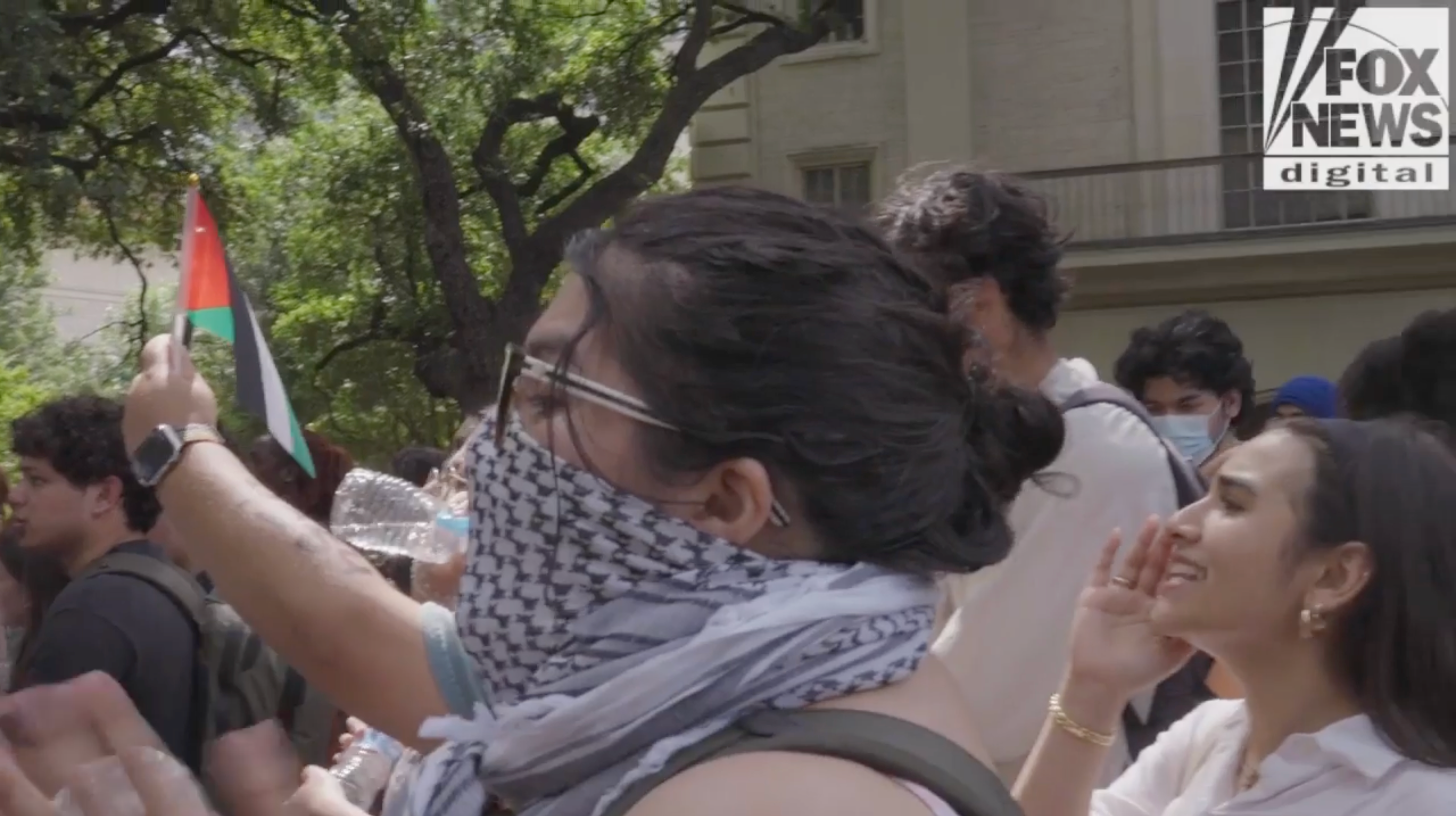
As students chanted “From the River to the Sea, Palestine will be free,” Jewish students spoke with Fox News Digital about the antisemitism and extreme anger they have experienced on campus during this week’s protests.
Hundreds of protesters gathered on campus at the University of Texas at Austin on Wednesday to participate in an unruly anti-Israel protest that included “significant participation by outside groups,” according to a statement from the school. Nearly 60 people were arrested, but criminal charges were dropped against 46 of the 57 protesters.
UT Austin joined universities like Columbia and Yale, as well as the University of Southern California, where anti-Israel protests have made headlines in recent days. UT Austin said the protest was organized by the Palestine Solidarity Committee, which it said seeks to “paralyze the operations of universities across the country.”
Amid the protest, an anti-Israel student could be heard telling a Jewish student, “F— you Zion Nazi b—-,” and multiple students told Fox News Digital that they had been approached and told to “go back to Germany.” Other chants like “APD, KKK, IDF / they’re all the same,” were also heard, comparing the Austin Police Department and Israeli Defense Forces to the KKK.
Levi, a Jewish student who wore a kippah and an Israeli flag tied over his shoulders, told Fox News Digital Wednesday that the protest was made up of “pro-Hamas” individuals, but expressed his gratitude to law enforcement for making sure everybody remained “relatively peaceful.”
“We have seen a few acts of violence against the officers,” he said. “I’ve seen a lot of angry people, I’ve seen a lot of people that have been crying, I’ve heard a lot of Jew hatred. I don’t call it antisemitism anymore, I think that’s sugarcoating it, it’s Jew hatred when a girl walks up to me and says, ‘You should go back to Germany.’”
“Every time they protest, it’s going to make me louder, it’s going to make me prouder to be a Jew and I’m not going to go home. They’re not going to scare me,” Levi added. “I know the university administration has our backs in ensuring that Jews feel safe on college campuses. I’ve seen a lot of anti-Israel protests and I understand that. I’ve seen a lot of pro-Hamas chants. I’ve heard a lot of them.”
COLUMBIA GIVES 7-WORD UPDATE ON NEGOTIATIONS AS UNIVERSITY CROSSES DEADLINE TO CLEAR ANTI-ISRAEL PROTEST
“I’m ready for this to be over, I’m ready for Jew hatred to not have a place on our campus,” he concluded. “I’m glad law enforcement and the administration is taking the correct steps to ensure that hatred has no place here at the University of Texas.”
Another Jewish student, Jeremy, told Fox News Digital that he was also told by anti-Israel protesters to “go back to Germany” and described the protests as “extremely antisemitic.”
“I do obviously support the right to protest no matter what,” he said. But, “It’s getting a little antisemitic and, of course, it’s not how it should be going.”
Zachary, a Jewish student, told Fox News Digital that he was counter protesting to represent Israel and stand in solidarity with the Jewish people.
ANTI-ISRAEL CAMPUS PROTESTS ARE SPREADING: CALIFORNIA, TEXAS BRACE AFTER ACTIVISTS OVERRUN COLUMBIA, YALE
“It’s hurtful, you know, antisemitic rhetoric is being spread throughout,” he said. “We hear the chants and things like that. It’s really tough to hear, but it’s important that we stand here peacefully and share information and be willing to have discussions with individuals.”
“But, yeah, it’s disheartening to hear that [anti-Israel chants],” he added. “We go to a school with such a great education and with such a great system and this rhetoric is still being spread around campus.”
The APD and Texas Department of Public Safety (DPS) were observed making arrests while protesters chanted, “Pigs go home!” The keffiyeh-wearing protesters attempted to set up a few tents before police intervened.
The DPS later told Fox News Digital the arrests were made “in order to prevent any unlawful assembly and to support UT Police in maintaining the peace by arresting anyone engaging in any sort of criminal activity, including criminal trespass.”
Republican Gov. Greg Abbott denounced the protests as lawless and antisemitic on X.
“These protesters belong in jail,” Abbott wrote. “Antisemitism will not be tolerated in Texas. Period. Students joining in hate-filled, antisemitic protests at any public college or university in Texas should be expelled.”
UT Austin told Fox News Digital early Wednesday afternoon that it “does not tolerate” disruptive protests and that evening university President Jay Hartzell released a statement about the protest activity, calling it a “challenging day.”
“We have witnessed much activity we normally do not experience on our campus, and there is understandably a lot of emotion surrounding these events,” Hartzell wrote. “Today, our University held firm, enforcing our rules while protecting the Constitutional right to free speech.”
ANTI-ISRAEL AGITATORS CONTINUE NATIONWIDE DISRUPTIONS WITH ESCALATIONS AT USC, HARVARD AND COLUMBIA
Jay Hartzell, president of The University of Texas at Austin, speaks during the National Association of Business Economics (NABE) economic policy conference in Dallas, Texas, US, on Tuesday, Oct. 10, 2023. (Nitashia Johnson/Bloomberg via Getty Images)
“Peaceful protests within our rules are acceptable,” he added. “Breaking our rules and policies and disrupting others’ ability to learn are not allowed.”
Hartzell also applauded law enforcement and staff for allowing peaceful protests that “happen within the rules.”
“We are grateful for the countless staff members and state and university law enforcement officers, as well as support personnel who exercised extraordinary restraint in the face of a difficult situation that is playing out at universities across the country,” he said.
“There is a way to exercise freedom of speech and civil discourse, and our Office of the Dean of Students has continued to offer ways to ensure protests can happen within the rules,” he added. “The University of Texas will continue to take necessary steps so that all our university functions proceed without interruption.”
Fox News’ Christopher White, Andrea Vacchiano, Lawrence Richard and Michael Dorgan contributed to this report.
Read the full article from Here

Los Angeles, Ca
Bear brings traffic to a halt on busy Southern California freeway

A bear brought motorists to a stop in Santa Clarita when it wandered onto a busy freeway and took a look around on Tuesday evening.
The traffic-snarling carnivore was spotted shortly after 7 p.m. on the 14 Freeway near Newhall Avenue.
Video recorded by @dan-kanes and shared with KTLA shows the bear walking on the freeway, looking around and then turning back toward the hills.
“Motorists displayed compassion and patience for the bear,” said Kanes, who described the bear as looking “a little confused.”
KTLA Morning News anchor Chris Schauble said he was stuck in the backup after being alerted by his daughter.
“So, I’m leaving the gym and sure enough it’s nuts out there … I thought, ‘Oh there was an accident,’ I had no idea it was a bear,” he said.
Wildlife experts say spring is the time of year that bears leave their winter dens in search of food.
Southwest
3 Native American tribes seeking rights to Colorado River water in $5B settlement

A proposed water rights settlement for three Native American tribes that carries a price tag larger than any such agreement enacted by Congress took a significant step forward late Monday with introduction in the Navajo Nation Council.
The Navajo Nation has one of the largest single outstanding claims in the Colorado River basin and will vote soon on the measure in a special session. It’s the first of many approvals — ending with Congress — that’s needed to finalize the deal.
Climate change, the coronavirus pandemic and demands on the river like those that have allowed Phoenix, Las Vegas and other desert cities to thrive pushed the tribes into settlement talks. The Navajo, Hopi and San Juan Southern Paiute tribes are hoping to close the deal quickly under a Democratic administration in Arizona and with Joe Biden as president.
PLUMBING PROBLEM AT GLEN CANYON DAM THREATENS WATER SUPPLY OF COLORADO RIVER SYSTEM
A landmark 1922 agreement divided the Colorado River basin water among seven western states but left out tribes. The tribes are seeking water from a mix of sources: the Colorado River, the Little Colorado River, aquifers and washes on tribal lands in northeastern Arizona.
Nearly one-third of homes on the Navajo Nation, which stretches across 27,000 square miles of Arizona, New Mexico and Utah, don’t have running water. Many homes on Hopi are similarly situated.
San Juan Southern Paiute will vote on the settlement within weeks, tribal President Robbin Preston Jr. said in an email. Along with guaranteed water deliveries, the tribe is asking Congress to approve a treaty it signed with the Navajo Nation in 2000 to establish an 8.4 square-mile reservation within the Navajo reservation.
A windmill draws water for livestock in Leupp, Arizona, on the Navajo Nation on March 9, 2024. A proposed water rights settlement for three Native American tribes that carries a price tag larger than any such agreement enacted by Congress took a significant step forward late on May 13, with introduction in the Navajo Nation Council. (AP Photo/Felicia Fonseca)
“We will have economic opportunities that our tribal members have never seen before, and which will give hope and pride to our people,” Preston said.
Without a settlement, the tribes would be at the mercy of courts. Already, the U.S. Supreme Court has ruled that the federal government is not bound by treaties with the Navajo Nation to secure water for the tribe. Navajo has the largest land base of any of the 574 federally recognized tribes and is second in population with more than 400,000 citizens.
A separate case that has played out over decades in Arizona over the Little Colorado River basin likely will result in far less water than the Navajo Nation says it needs because the tribe has to prove it has historically used the water. That’s hard to do when the tribe hasn’t had access to much of it, Navajo Attorney General Ethel Branch said.
Congress has enacted nearly three dozen tribal water rights settlements across the U.S. since 1978. Federal negotiation teams are working on another 22 settlements involving 34 tribes in nine states, the Interior Department said.
The costliest one enacted by Congress was for the Confederated Salish and Kootenai Tribes in Montana at $1.9 billion. The Navajo, Hopi and San Juan Southern Paiute tribes are seeking more than $5 billion in their settlement.
About $1.75 billion of that would fund a pipeline from Lake Powell, one of the two largest reservoirs in the Colorado River system, on the Arizona-Utah border. The settlement would require the U.S. Bureau of Reclamation to complete it by the end of 2040.
From there, water would be delivered to dozens of tribal communities in remote areas.
“Whatever funding we walk away with is funding we don’t otherwise have,” Branch said. “It will be a challenge.”
The Navajo Nation has settled its claims to the Colorado River basin in New Mexico and Utah. It’s separately pursuing two other much smaller settlements in New Mexico.
Arizona — situated in the Colorado River’s Lower Basin with California, Nevada and Mexico — is unique in that it also has an allocation in the Upper Basin. Under the settlement terms, Navajo and Hopi would get about 47,000 acre-feet in the Upper Basin — nearly the entire amount that was set aside for use at the Navajo Generating Station, a coal-fired power plant that shut down in late 2019. Navajo previously had agreed not to seek that water for the 50 years prior to 2019.
The proposal also includes a combined 9,500 acre-feet per year of water from the Colorado River’s Lower Basin for Navajo and Hopi. Navajo additionally would have the right to draw 40,780 acre-feet from the Little Colorado River — about one-third of what’s estimated to reach the reservation annually.
An acre-foot of water is roughly enough to serve two to three U.S. households annually.
Arizona, in turn, gets certainty in the amount of water available throughout the state as it’s forced to cut back as the overall supply diminishes. Navajo and Hopi, like other Arizona tribes, could be part of that solution if they secure the right to lease water within the state that could be delivered through a canal system that already serves metropolitan Tucson and Phoenix.
The two tribes came close to reaching a pact to settle water rights in Arizona in 2012, but the tentative deal fell through. This time around, Navajo officials launched a public education campaign.
They held lengthy community meetings with translations in Navajo — “tó bee há haz’ a” meaning “water right,” for example — and described water’s role in the tribe’s creation story and in ceremonies. They explained complicated water law, past attempts to settle and what’s at stake if the settlement fails.
In Leupp, the audience mostly asked about immediate needs: fixing the electricity on the water pump, improving roads and drilling wells.
Marlene Yazzie recalled her mother hitchhiking more than 100 miles to pressure tribal officials for electricity and water — which never came. Yazzie herself relies on water hauled to her home in nearby Birdsprings for washing, drinking and for her livestock.
“How many more years do we have to wait?” she asked.
Read the full article from Here
Los Angeles, Ca
California rap beef: What is the history of it?

Rap beefs have been around for decades and although they are nothing new, the ongoing feud between rappers Kendrick Lamar and Drake has sparked renewed interest in musical altercations.
What is a rap beef?
A rap beef can be defined as a feud between rappers who create songs with the primary purpose of verbally attacking each other. The songs are known as diss tracks and can be a display of lyrical superiority for artists — and entertainment heaven for fans.
What are some popular rap beefs in California?
While multiple reports credit New York as being the home state to rap beef, California rappers have chimed into their fair share of popular wars of words.
Ice Cube vs. N.W.A
The late 1980s feud beef between Ice Cube and his former group, NWA, was a legendary rap beef with roots in California. N.W.A originated in 1987 with some hip-hop icons such as Ice Cube, Dr. Dre, Eazy-E, MC Ren, DJ Yella, and Arabian Prince. Most of the members grew up together in Compton.
Tensions rose when Ice Cube left the group because of disagreements about money, according to americansongwriter.com. In an interview with Thrasher Magazine, Ice Cube said he would “rather be broke than be in a major group and not be getting paid right.”
His departure from N.W.A led to a rivalry between him and his former group mates and the 1991 release of what is still considered to be one of the greatest diss records of all time, “No Vaseline.”
2pac vs. Biggie
Tupac Shakur (2pac) vs. Christopher Wallace (Notorious B.I.G or Biggie) is remembered by many to be the greatest, and most tragic, rap beef of all time. Tupac, 24, was signed to a California-based label, and Biggie, 25, was from New York. The two went back and forth through their music from 1994-1996.
They started off as collaborators, but a beef was sparked after 2pac was ambushed and wounded at a New York City recording studio in 1994. He alleged that Biggie and P. Diddy were responsible for it, according to the Associated Press. Several legendary diss tracks stemmed from their feud such as “Who Shot Ya,” by Biggie and “Hit em Up,” by 2pac.

The West Coast vs. East Coast rivalry ended in September of 1996 when 2pac was gunned down in Las Vegas. Six months later, Biggy would suffer the same fate when he was fatally shot in Los Angeles. Their deaths were a blow to the hip-hop world, and although it has been almost 30 years, many fans of the genre agree there’s a void in the rap industry that still resonates today.
The Game vs. 50 Cent
The war of words between Jayceon Taylor (The Game) and Curtis Jackson (50 Cent) is one of the longest and most notorious hip-hop beefs in history. This was another West Side vs. East Side battle with The Game being from Compton and 50 Cent from New York. According to BET.com, their beef officially started in 2005 when 50 Cent went on the Hot 97 radio show and announced that The Game, who was signed to his label, was getting kicked off.
In response, The Game showed up to the radio building to confront 50 Cent but was blocked by security from going inside, according to complex.com. The outdoor altercation led to a shootout between the two sides and one person from The Game’s camp was injured.

Following the incident, 50 Cent did several interviews where he took jabs at The Game. He accused The Game of being an exotic dancer with no street credit and a host of other things. In response, The Game launched a campaign called G-Unot, a mockery of 50 Cent’s label and brand, G-Unit. It also birthed a nearly 15-minute iconic diss track by The Game, 300 Bars and Running.
The beef lasted for several years, until The Game publicly apologized in 2016 during a show in Los Angeles, according to XXL.com. However, it was seemingly reignited in 2022 when The Game called 50 Cent a profane name on stage.
Kendrick Lamar vs. Drake
2024 is the current host of one of the wildest rap beefs in recent years – Kendrick Lamar vs. Drake. Their animosity toward each other goes back to 2013 when Kendrick Lamar included a line in a song that said he wanted to murder Drake and other popular rappers when it came to music, according to KTLA.

At the time, Lamar claimed the bar was figurative and friendly competition, but fast forward over a decade later and things between the two are far from friendly. Over the last several weeks nearly 10 diss tracks have been dropped between the two rappers. From allegations of domestic violence and child abuse to plastic surgery and more – the limits of disrespect toward each other have been endless. On May 3 alone, four songs were released within 24 hours which has had fans on the edge of their seats to see what will happen next.
Do rappers start beef for publicity or monetary gain?
Although there has not been any hard evidence of staged rap beefs recorded, it cannot be denied that music labels benefit from the extra sales and streams garnered from music feuds.
For example, Drake is signed to Universal Music Group. Kendrick Lamar is signed to his own label called pgLang. pgLang is a partner of Interscope Records which is owned by Universal Music Group. Essentially, the two are label brothers under Universal – and most of their recently released diss tracks are available for consumption on YouTube, Apple Music, Spotify and SoundCloud.
With all the extra focus on their ongoing beef, Universal Music Group is most likely swimming in a pool of new revenue from the unprecedented number of diss tracks dropped and streamed from their artist’s rap beef.
In fact, the Kendrick Lamar and Drake beef has been so successful that several of their new releases are in the top 20 of Billboard’s top 100 songs, and Kendrick Lamar recently broke Drake’s 2021 Spotify record for most streams in one day – over 6 million streams.
-

 News1 week ago
News1 week agoCompass Direct LLC’s 2024 Registration in North Carolina
-

 World1 week ago
World1 week agoTech compliance reports, Newsletter
-

 News1 week ago
News1 week agoMan, 75, confesses to killing wife in hospital because he couldn’t afford her care, court documents say
-

 News1 week ago
News1 week agoColumbia University cancels its main commencement ceremony after weeks of turmoil
-

 World1 week ago
World1 week agoPentagon chief confirms US pause on weapons shipment to Israel
-

 Politics1 week ago
Politics1 week agoRFK Jr said a worm ate part of his brain and died in his head
-

 Politics1 week ago
Politics1 week agoPresidential polls show deadlocked race as party conventions quickly approach
-

 World1 week ago
World1 week agoConvicted MEP's expense claims must be published: EU court


